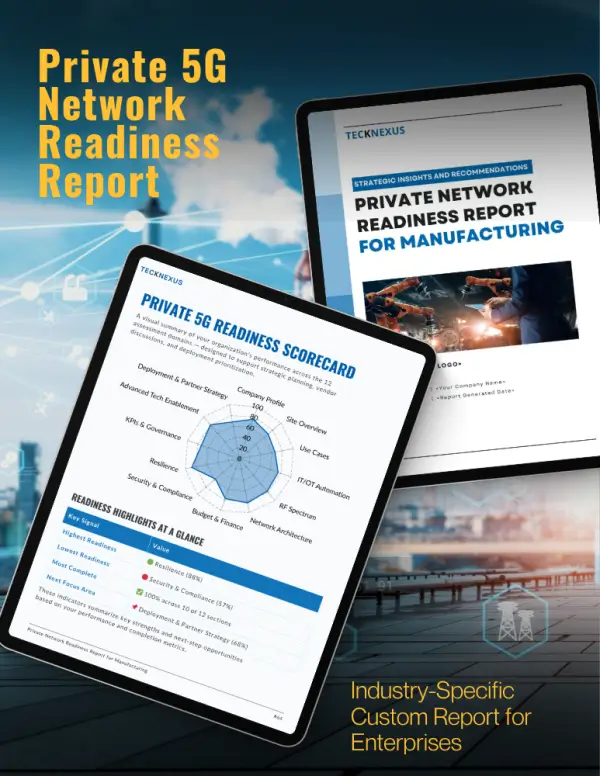How is Ericsson’s Private 5G Improving Operations in Smart Factories?
Deployment of Private Networks in Factories
Ericsson implemented private 5G networks in its smart factories to address both immediate and long-term connectivity needs. Two network solutions were deployed: a scaled-down macro network and Industry Connect, a solution optimized for smaller deployments. By utilizing CBRS spectrum in the U.S., Industry Connect provided agility for initial use cases such as building management systems and low-complexity connectivity requirements.
The higher-grade private network, operating on millimeter wave spectrum, brought advanced capabilities like high bandwidth and ultra-low latency, which were critical for industrial applications. This dual-network approach ensured flexibility and scalability, meeting a wide range of factory needs.
When the COVID-19 pandemic struck, the importance of private 5G became even more evident. Travel restrictions prevented experts from visiting the site to configure and integrate equipment. Leveraging technologies like augmented reality, enabled by 5G’s robust connectivity, allowed Ericsson to overcome these barriers. Remote collaboration became possible, ensuring the factory could launch and operate effectively despite global disruptions.
Challenges and Lessons Learned
One major challenge during the deployment was the limited availability of devices compatible with millimeter wave 5G. This constrained the range of applications that could initially be implemented. To address this, Ericsson collaborated with ecosystem partners to expand device compatibility and functionality. Incorporating mid-band spectrum further aligned the network with global standards, broadening its applicability and ecosystem support.
This experience underscored the importance of flexibility, ecosystem collaboration, and iterative problem-solving in private 5G adoption. The lessons learned not only improved the factory’s operations but also contributed to Ericsson’s overall approach to industrial connectivity.
Manufacturing Use Cases Benefiting from Private 5G Networks
Enhancing Automation and Connectivity
Private 5G networks have enabled a variety of transformative use cases in Ericsson’s smart factories:
-
- Autonomous Mobile Robots (AMRs):
AMRs are vital for streamlining logistics within factories. Private 5G connectivity enables these robots to communicate with fleet managers in real-time, navigate autonomously, and adjust routes dynamically. The ability to dock precisely and respond to environmental changes is enhanced by 5G’s low latency and reliability, improving overall operational efficiency. - Inbound Logistics:
Managing inbound logistics involves verifying pallet dimensions to ensure compatibility with automated forklifts and warehouse systems. AR glasses connected via 5G allow workers to measure pallet sizes and record dimensions effortlessly while on the move. This reduces manual errors, speeds up the process, and ensures seamless integration with automated systems. - Training and Skill Development:
AR and VR technologies have revolutionized employee training, especially for roles that require specialized skills like surface mount assembly. These tools immerse workers in realistic simulations, providing hands-on experience without the risk of real-world errors. This approach accelerates the learning curve and helps employees understand their role within the broader production ecosystem. - Real-Time Quality Control:
AI-powered cameras connected via 5G enable precise object recognition, pose estimation, and quality checks. These systems replace manual inspections, enhancing consistency and reducing time and resource requirements. - Enhanced Human-Machine Collaboration:
Workers in Ericsson’s factories use 5G-connected tools like smartphones and cameras to innovate and improve processes. For example, employees can propose AI-driven solutions to address specific challenges. This human-centric approach ensures that technology empowers workers, enabling them to focus on higher-value tasks and fostering a culture of collaboration and adaptability.
- Autonomous Mobile Robots (AMRs):
A Human-Centric Approach
Ericsson prioritizes technology that enhances human capabilities rather than replacing workers. Employees are encouraged to experiment with tools like 5G-connected cameras and propose creative solutions. This collaborative culture ensures workers see technology as an ally, fostering innovation and adaptability while maintaining a strong human element in the workplace.
The Role of 5G in Industry 4.0 Digitalization
Enabling Cutting-Edge Technologies
Private 5G networks are catalysts for several advanced technologies in Industry 4.0:
-
- AI and Machine Learning: AI-powered systems connected via 5G enable real-time quality control and predictive analytics. Cameras serve as sensors for object detection and pose estimation, making processes more accurate and efficient.
- Edge Computing: By supporting low-latency data processing at the edge, 5G ensures that critical decisions are made in real time, enabling smarter operations.
- Advanced Robotics: Wireless 5G connectivity frees robots from the constraints of physical cables, allowing greater flexibility and enabling them to handle complex tasks with precision.
Preparing for the Future
Manufacturers looking to embrace Industry 4.0 should adopt a forward-thinking digital agenda. This involves integrating operational technology (OT) with IT systems, leveraging advanced analytics, and exploring new use cases. 5G should be seen as an innovation platform that unlocks possibilities for advanced industrial IoT and edge computing, enabling organizations to remain competitive in a rapidly evolving landscape.
Supporting Sustainability Goals with Private 5G
Direct and Indirect Contributions to Sustainability
Private 5G networks contribute to sustainability through enhanced visibility, control, and efficiency in industrial processes. Examples include:
-
- Process Optimization: Sensors connected via 5G monitor energy consumption and grid dynamics in real time, allowing factories to optimize energy use and reduce waste.
- Reduced Emissions: By improving process efficiency and minimizing scrap, 5G-connected systems lower the overall carbon footprint of production.
- Lifecycle Tracking: Private 5G enables manufacturers to track the environmental impact of their products throughout their lifecycle, from design to disposal.
Beyond Factories
5G’s role in sustainability extends to industries outside manufacturing. For instance, public 5G networks can monitor and manage energy grids, enabling the integration of renewable energy sources. Real-time data from 5G-connected devices facilitates better decision-making, reducing emissions and promoting cleaner production methods.
Advice for Manufacturers Starting Their Private 5G Journey
Establishing a Digital Agenda
The first step for manufacturers considering private 5G is to define a clear digital agenda. This involves:
-
- Identifying operational gaps and prioritizing applications where 5G can deliver immediate value.
- Securing stakeholder buy-in across departments to ensure alignment on digital transformation goals.
- Starting with straightforward use cases, such as sensor connectivity or AMR integration, before advancing to more complex applications.
Building an Adaptable Framework
An adaptable data architecture is essential for managing the influx of data generated by 5G-connected systems. This framework should:
-
- Be scalable and flexible to accommodate evolving needs.
- Prioritize security, leveraging private networks to keep data on-premises and implementing VLAN-like structures for secure data management.
Incremental Progress and Team Development
Starting with simpler applications allows IT teams to familiarize themselves with 5G technologies. Over time, they can advance to more complex use cases, such as integrating 5G into critical production processes. Training and educating IT teams on private 5G configurations and 3GPP technologies are crucial for ensuring a smooth transition and maximizing the network’s potential.
Final Thoughts
Ericsson’s implementation of private 5G in its smart factories demonstrates the transformative potential of this technology. From enabling advanced use cases to fostering sustainability and empowering workers, private 5G is a cornerstone of Industry 4.0. Manufacturers embarking on this journey should focus on creating a robust digital agenda, prioritizing incremental progress, and empowering their workforce. As private 5G ecosystems continue to evolve, the opportunities for innovation, efficiency, and growth are virtually limitless.














